|
The Water Festival 18-20 November 2002
Phnom Penh, Cambodia
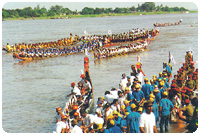
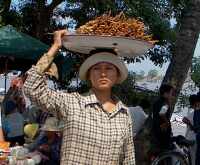
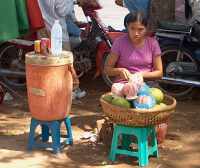
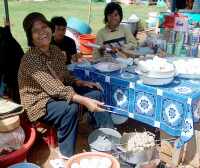
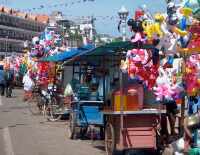
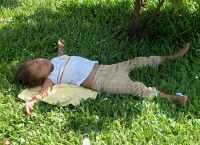
|
The Water Festival is the biggest and most exuberant of all Cambodia's many holidays. (The government officially celebrates 23 public holidays!) It is always held on the full moon of the eleventh lunar month, at the end of Cambodia's rainy season, when the Mekong River level begins to subside. When the Mekong started rising three months ago, it caused the Tonle Sap River to reverse its flow, going from the Mekong into Southeast Asia's largest freshwater lake, the Tonle Sap Lake. Starting now, the river's flow reverses again and heads back toward the Mekong, draining the lake until it becomes about one fifth its maximum size at high water.
- Upwards of one million people flock to Phnom Penh for the Water Festival, representing all of Cambodia's 21 provinces in the boat races which are the center of interest for three days.
- 400 boats participated in the races on the Tonle Sap River at its juncture with the Mekong River and the Bassac River. More than 25,000 men and women form the crews paddling the boats.
- Unless the villagers are lucky enugh to have a relative in the city to stay with, they sleep outside on the ground while here in the city. Two of the first three days of the festivities saw heavy rains during the night, catching many people out in the open with no shelter at all.
- Prime Minister Hun Sen personally sponsored 300 of the 400 boats in the races, paying for T-shirts and caps and maybe food for the 57-70 paddlers in each boat.
- A traditional feature of the Water Festival is a fireworks display over the Mekong River each of the three nights. It is a bit odd in that it starts at 6:00 PM when it is not fully dark yet. On the last night the king and queen were among the spectators on the river bank.
- In an attempt at traffic control, the police blocked most motor vehicles from approaching the water front. The last day of the festival, I had to visit a family who live near the river, and I had to walk about a kilometer from the point where the motorcycle taxi had to drop me off.
- These pictures focus on the thousands of people who try to make a few extra bucks during the festival, selling mostly food but also inflatable toys, hats, and trinkets. And then finally there's a little girl, fast asleep on the grass, worn out by the heat and excitement, while mom sells snacks nearby.
Post Script
- As the celebration wound down on the last night, a Soviet-made grenade was found hanging on a plastic string under an outdoor stage set up by a TV station. It still had its pin in place so police left it there because they didn't want to disturb the festivities.
- Traffic congestion was terrible during the three-day festival. A final-night traffic jam on the southbound highway and the Japanese Bridge lasted twenty hours, finally dissipating at 4:00 AM the next morning.
- Phnom Penh can handle 4,000 parked cars on any given day. During the festival, around 10,000 cars were in the city, creating traffic jams at every intersection "because the drivers from the countryside did not understand how to park their cars in the city."
|
|





